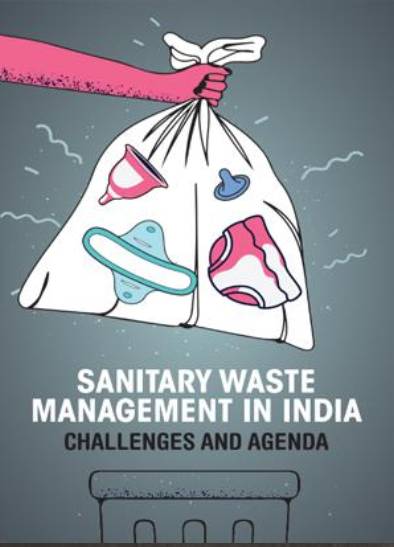The Solid Waste Management (SWM) Rules, 2016 classifies used sanitary napkins, diapers, condoms, tampons, and incontinence sheets as sanitary waste. According to the Menstrual Hygiene Alliance of India (MHAI), 336 million girls and women of reproductive again India generate about 1 billion sanitary napkins per month, or 12.3 billion sanitary napkins annually. Sanitary waste is voluminous and infectious, and plastic is used as a primary material in the manufacture of disposable sanitary products, underlining the need for sanitary waste management in India.
This report highlights status, challenges, and government initiatives in the context of segregation, collection, transportation, treatment, and disposal of sanitary waste. There have been very limited documented measures for collecting and disposing of other sanitary wastes such as tampons, condoms, incontinence sheets, and other similar waste in the country that reflects our concern for having a system for sanitary waste management in India. It also highlights the key concerns related to the increasing quantity of sanitary waste. It identifies the critical challenges associated with current sanitary waste disposal practices in India with evidence-based learning and policy measures to be considered going forward.
The report addresses recommendations for policy considerations, effective coordination among stakeholders, implementation protocol and waste governance by the local Government to institute a sustainable system for sanitary waste management.
Download File

